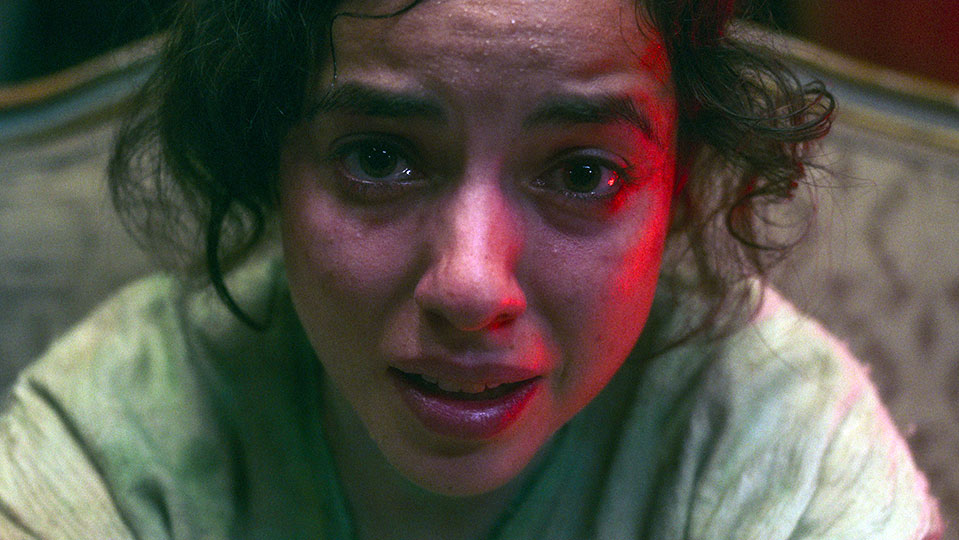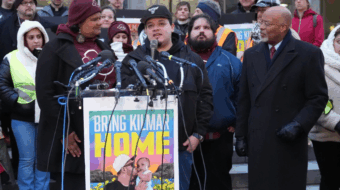
The new horror film No One Gets Out Alive clearly wants to scare you, but it wants to do it from a different perspective. This isn’t a film about a small “safe” suburban town terrorized by an out-of-nowhere masked killer, or a heroine who is the standardized stereotypical “All-American” young white woman with a seemingly unbothered existence. This film has chosen to show what happens when supernatural terror is added to lives already burdened by uncertainty and constant danger. No One Gets Out Alive uses the perils undocumented immigrant women face in pursuit of the so-called American Dream to showcase the things of nightmares.

Directed by Santiago Menghini, No One Gets Out Alive is based on the novel of the same name by Adam Nevill. Our main character, Ambar, played by Cristina Rodlo, has immigrated to the United States after years spent dutifully tending to her terminally ill mother in Mexico. When Ambar migrates to Cleveland, she has very little money and unsuitable clothing for what’s expected to be the coldest winter on record. After finding work at a local garment factory, she rents the cheapest room available from Red, played by Marc Menchaca, in an old boarding house. Soon, Ambar finds herself kept awake by the other tenants’ sobbing, disturbing nightmares, and strange noises echoing from the basement. It soon becomes clear that she may have walked into a sinister trap, and now she must fight to escape her living nightmare. For those familiar with the original book, the overall setting of a creepy old home is the same, but the movie chooses to make some key changes that help to heighten the sense of danger.
A major theme in the movie is Ambar’s sense of helplessness as she attempts to make a life for herself in a new land. Unlike the original book, Ambar is an undocumented immigrant who is confronted with a number of problems well before the mysterious sinister happenings in the boarding house make themselves known. Making this choice allows the film to introduce a less often showcased perspective in horror stories like these. This exploration gives a more enriched story with an added struggle that affects millions of people.
According to the Department of Homeland Security, there are over 5.5 million undocumented immigrant women living in the United States. Without authorized legal status, these women face a number of obstacles and dangers every day of their lives. This can include things such as not having access to affordable healthcare, inability to obtain proper identification and permits, lack of government assistance, and fewer overall resources for a secure life of economic dignity. These conditions often put them in situations where they are working low wage, cash-in-hand jobs that make it hard to keep a roof over their heads and food on the table. This, in turn, makes them even more susceptible to human trafficking. According to the American Civil Liberties Union, of the nearly 17,500 people estimated to be trafficked in the United States per year, undocumented women and children are said to be disproportionately affected. Being an undocumented immigrant woman is often a tough existence, and our protagonist Ambar is the personification of this struggle.
Ambar’s plight also does away with over-used tropes where characters continue to make nonsensical decisions simply to keep the plot going. She doesn’t stumble into danger because she’s bored or not thinking clearly. Ambar is forced into these situations, such as taking up residence in an obviously shady boarding house with questionable male landlords, because she has no real other options. She can’t just up and leave when things get unsafe because, without proper identification and much money to her name, she really has nowhere else to go. Ambar can’t even reach out to the police for fear that she may be detained due to her citizenship status. In this sense, poverty and criminalization are invisible monsters in the film, as they aid the physical monsters we are treated to on screen.
The story is a slow burn and takes some time to really take off. There are some jump scares scattered throughout as the mystery unfolds, but that may not be enough to hold everyone’s attention. Many viewers will stick around for the payoff of finding out what exactly is in the locked basement that is off limits to the tenants of the boarding house. That reveal is definitely worth the wait. Things also get bloody, violent, and brutal in the final act as if to make up for the lack of action in the first half of the film. Fortunately, the brutality shown is not gratuitous but fitting for the dark turn the plot takes.
It’s not as if a story about a possibly haunted house hasn’t been told before. The uniqueness of the film comes from who is allowed to be the hero and what victims are allowed to be more than just part of the body count. At one hour and 25 minutes, the movie doesn’t overstay its welcome and may serve as a great addition to your Halloween movie list when looking for something a little different from the usual.
No One Gets Out Alive is available globally on Netflix streaming service Sept. 29, 2021.









